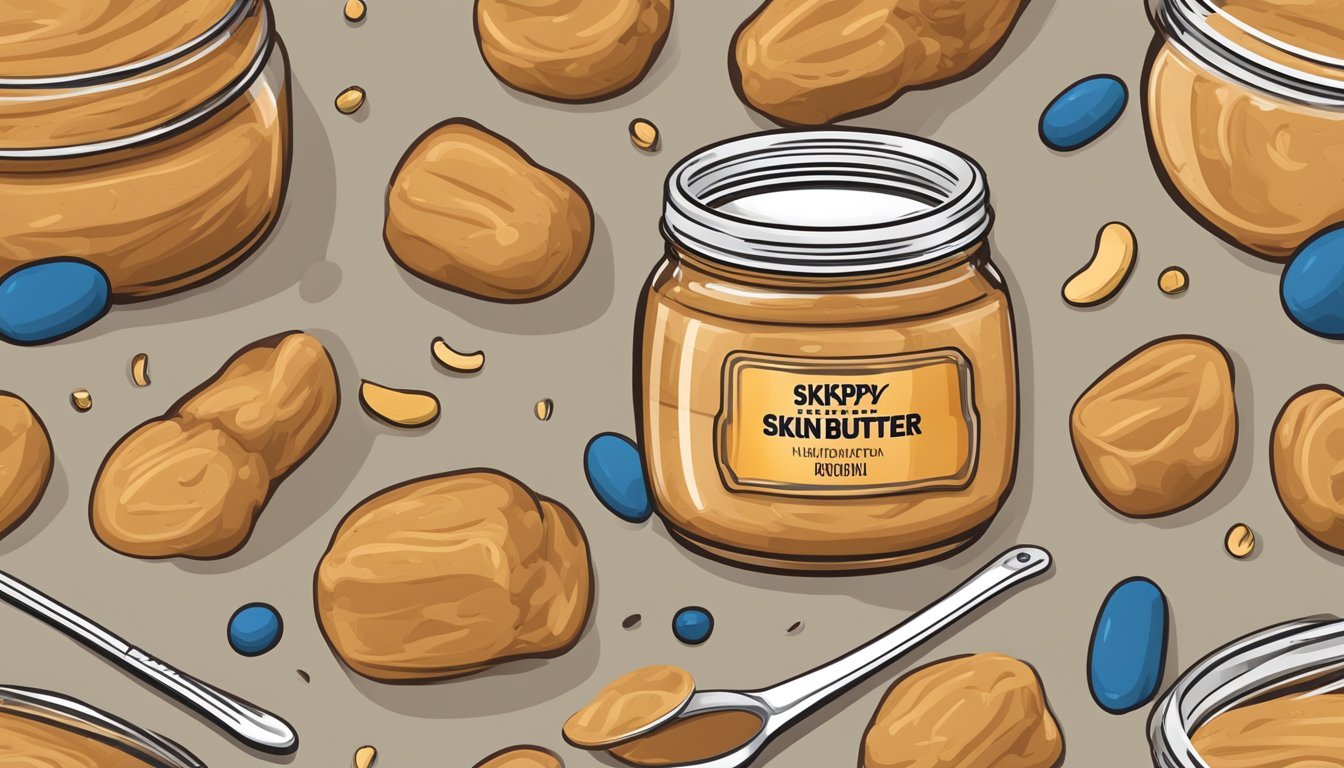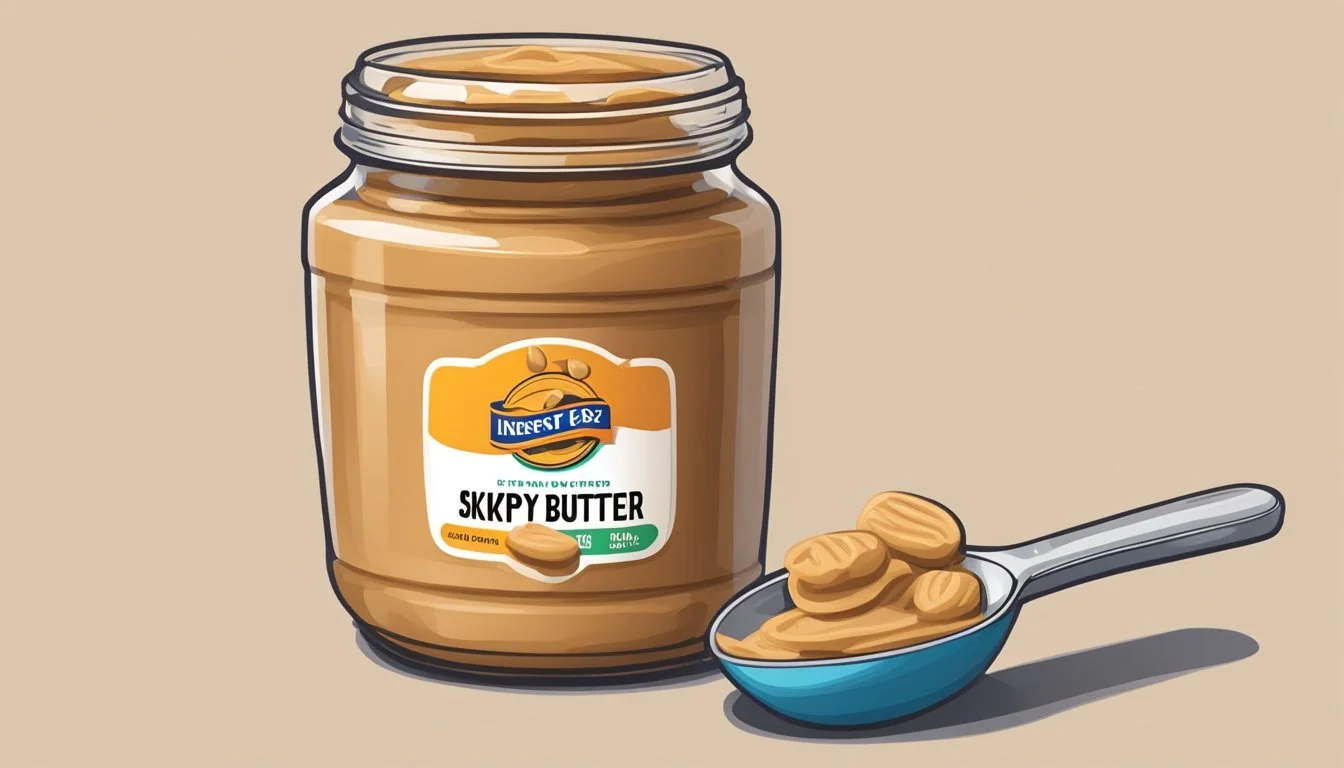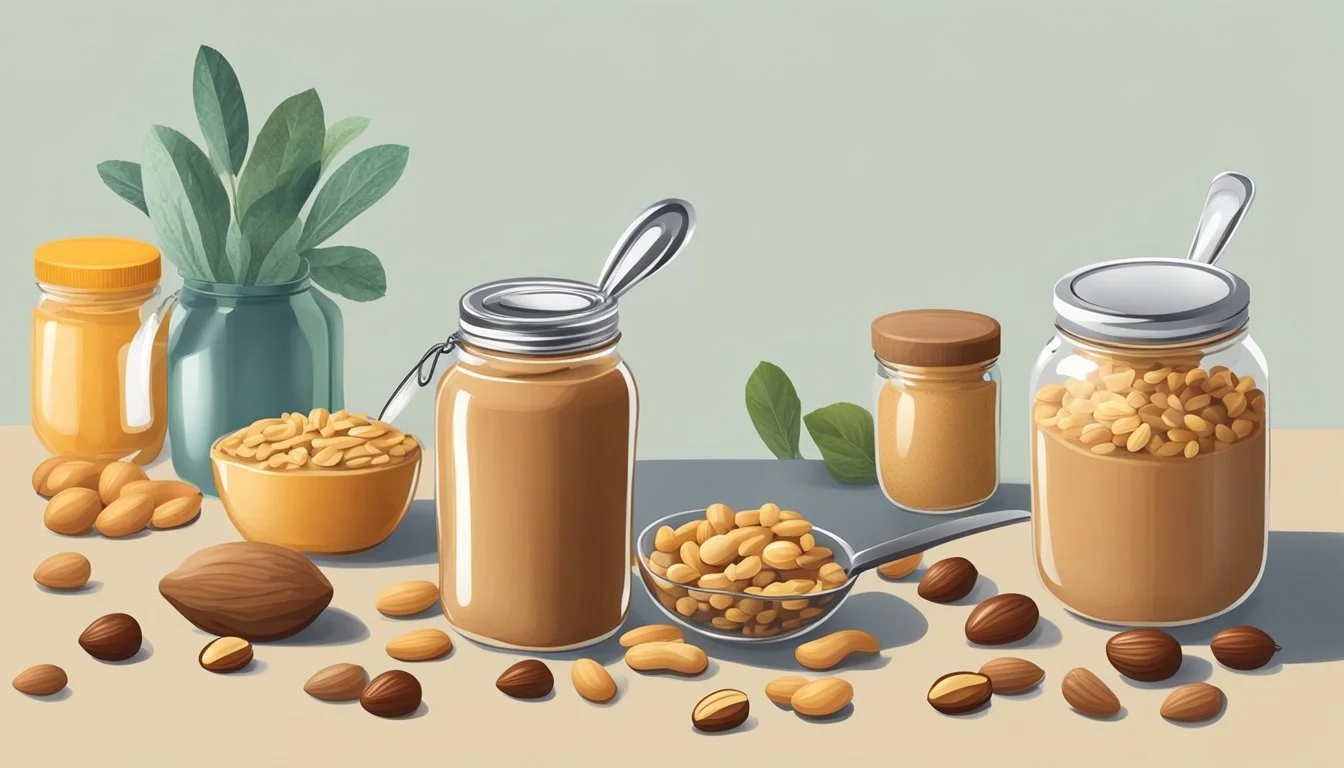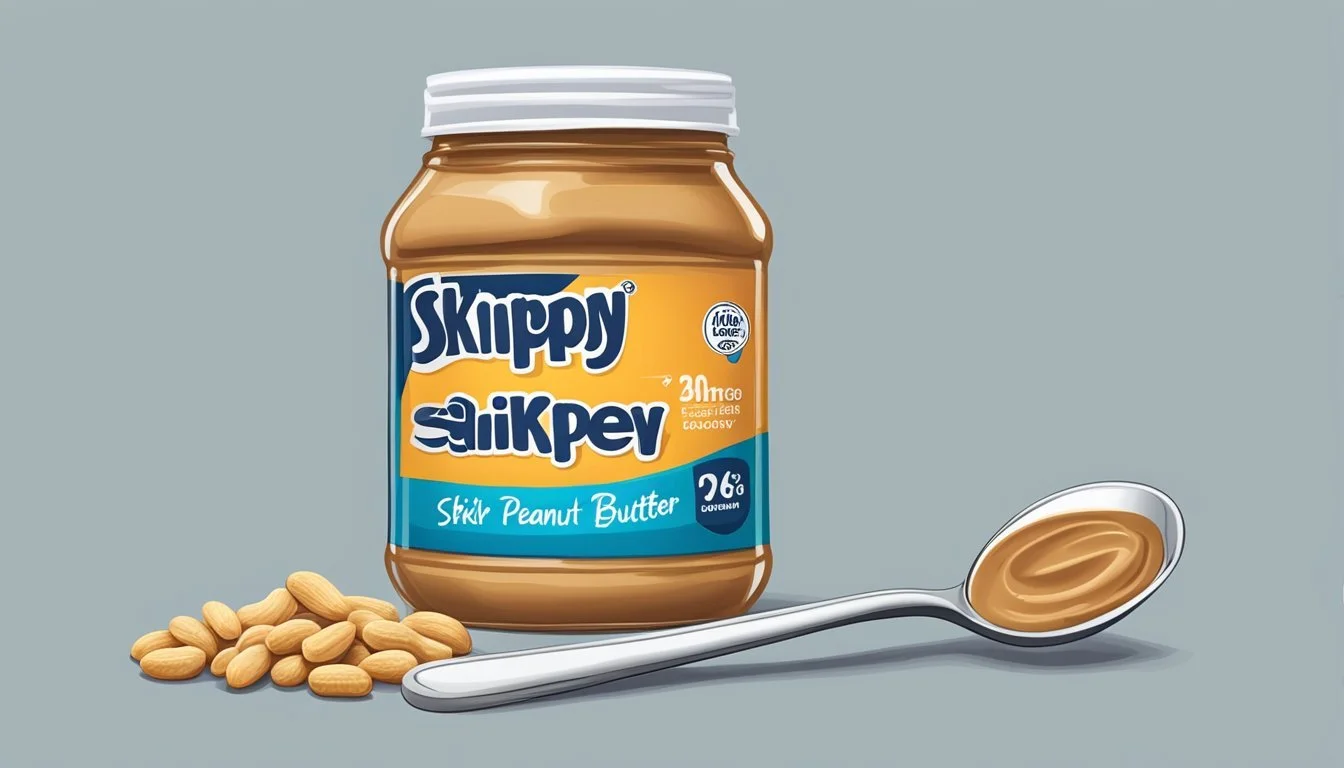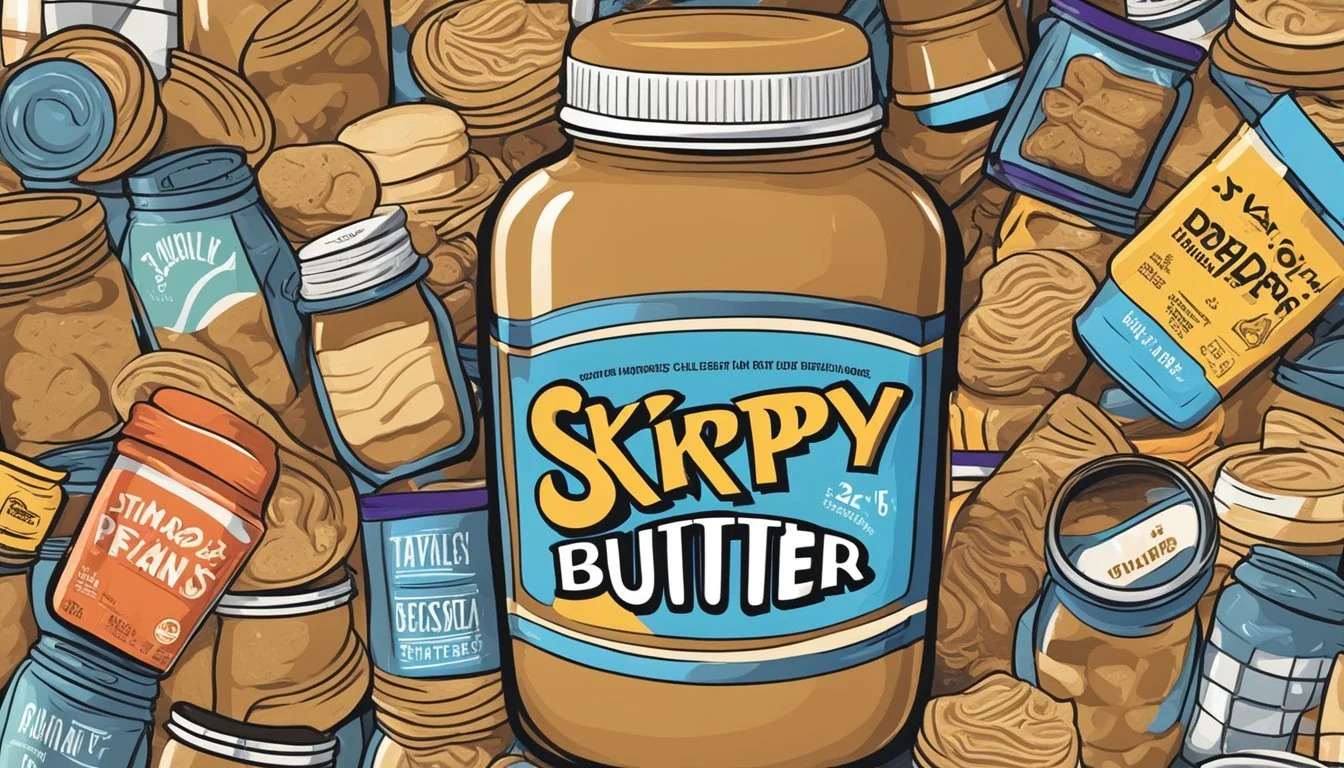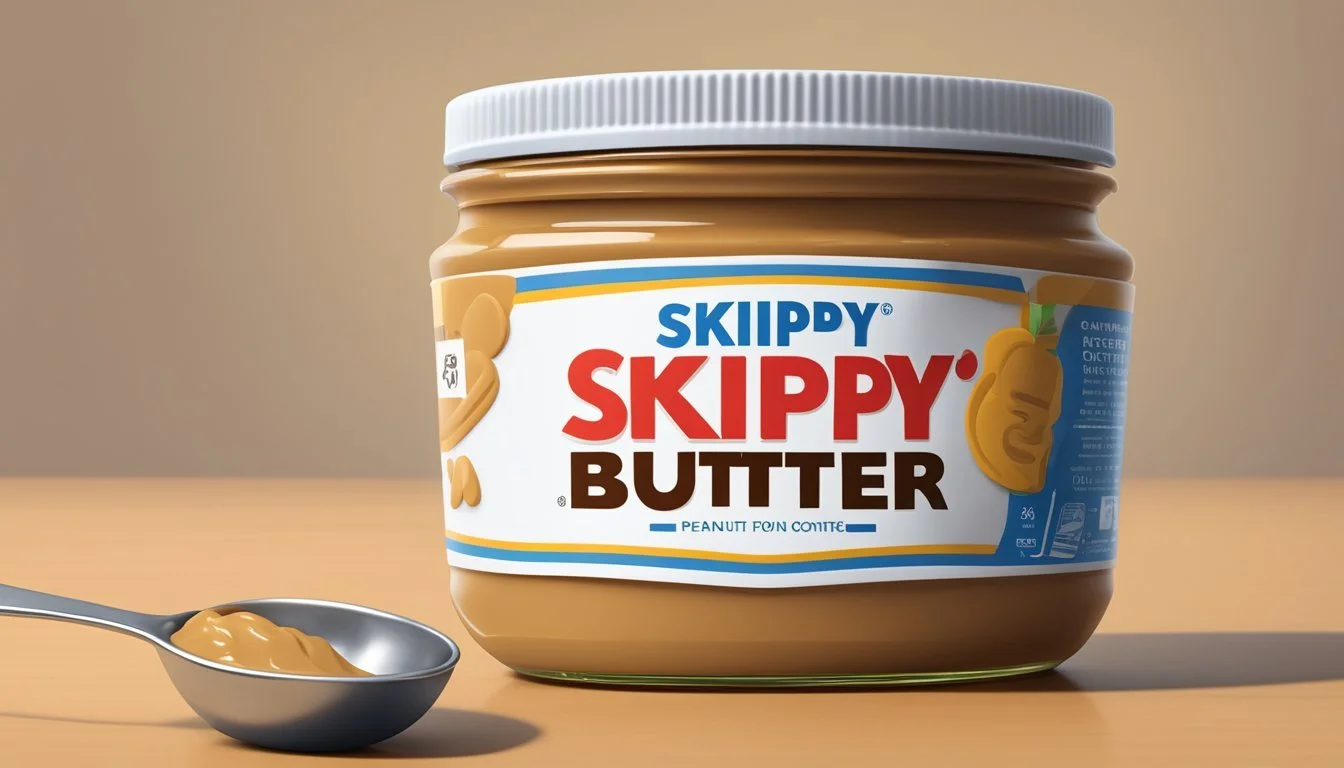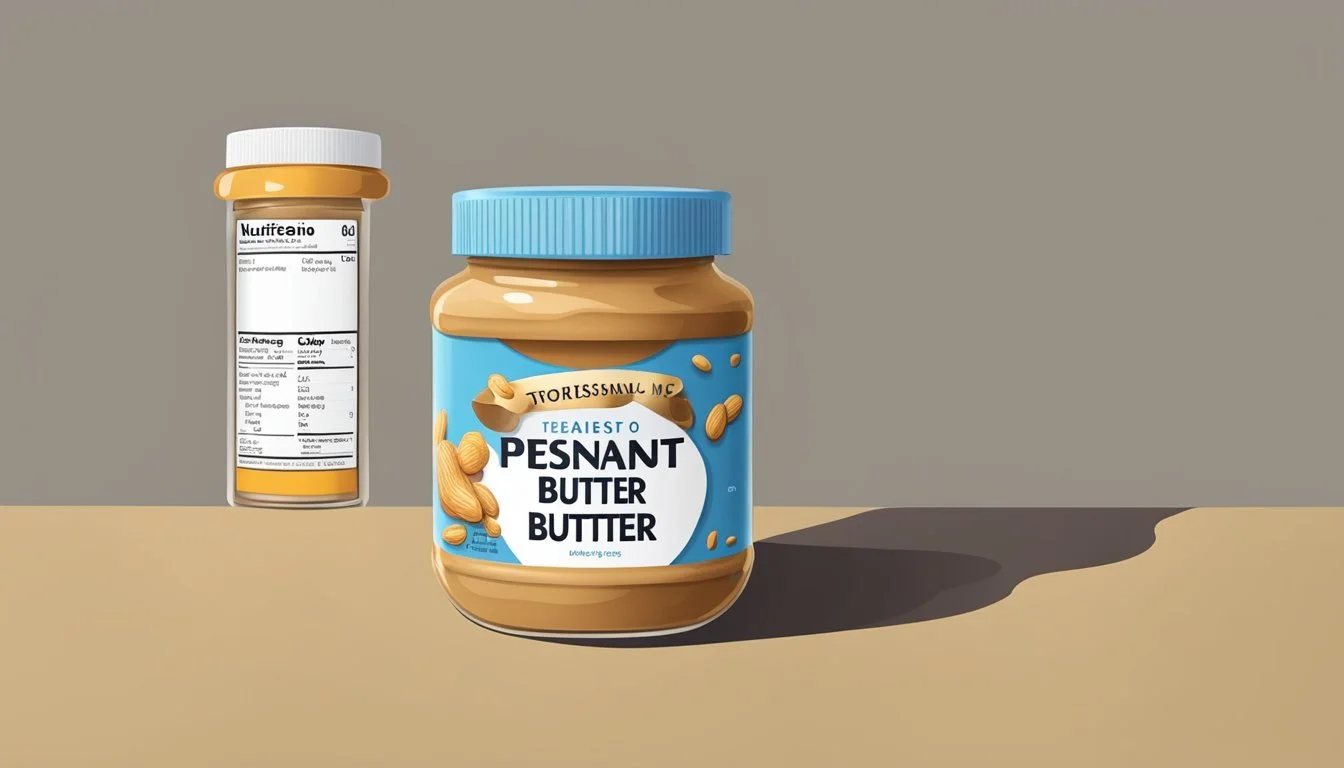How Much Skippy Peanut Butter Per Day Is Excessive?
Understanding Healthy Limits
Peanut butter is a staple in many households and is often lauded for its protein content and heart-healthy fats. Skippy, one of the popular brands, offers a variety of peanut butter choices, some of which are high in calories and moderate in protein. While incorporating Skippy peanut butter into a diet can contribute to muscle building and satiety due to its nutritional components, moderation is key to maintaining a balanced diet.
Consuming Skippy peanut butter in excessive amounts can introduce more calories into one's diet than may be necessary, potentially leading to weight gain over time. It's important to consider the nutritional profile of peanut butter; although it contains healthful monounsaturated and polyunsaturated fats, it also has significant calorie density and may contain added sugars and sodium, depending on the product variety.
Health experts often recommend mindful consumption of peanut butter, considering both portion size and frequency. For Skippy peanut butter, as with any similar product, adhering to the serving size–commonly 2 tablespoons–is a sensible approach to enjoy its benefits without overindulgence. Balancing peanut butter intake with other sources of nutrition helps maintain a well-rounded diet and supports overall health objectives.
Peanut Butter Nutritional Profile
When evaluating Skippy peanut butter for daily consumption, understanding its nutritional content is essential. This section breaks down the core components of its nutritional profile, including macronutrients, fat composition, protein quality, carbohydrates, and its vitamin and mineral content.
Macronutrients and Calories
A typical serving size of Skippy Creamy Peanut Butter, which is 2 tablespoons (32 grams), contains approximately 190 to 200 calories. Each serving is dense with macronutrients, primarily fats and proteins.
Calories: 190-200
Total Fat: 16g
Carbohydrates: 6g
Protein: 7g
Fats Content
The fat in Skippy peanut butter is predominantly unsaturated, which is considered a healthier fat choice. However, it also contains saturated fat, which in excess can lead to health issues.
Total fat: 16 grams per serving
Unsaturated fat: Predominant type
Saturated fat: Present in smaller quantities
Cholesterol: Peanut butter generally contains no cholesterol
Protein Quality
Peanut butter is a good plant-based protein source. Skippy peanut butter provides 7 grams of protein per 2 tablespoon serving, contributing to muscle maintenance and repair.
Protein: 7 grams per serving
Quality: High in plant-based protein
Carbohydrates and Sugar
Peanut butter contains a moderate amount of carbohydrates, with a small proportion deriving from sugars. The fibrous content aids in digestive health.
Carbohydrates: 6 grams per serving
Sugar: Low, but varies by product line
Fiber: Present and beneficial for digestion
Vitamins and Minerals
Peanut butter is rich in several vitamins and minerals including Vitamin E, magnesium, and B vitamins which support various bodily functions.
Vitamin E: An antioxidant protecting against oxidative stress
Magnesium: Contributes to over 300 biochemical reactions in the body
B Vitamins: B3 (Niacin) and B6 support energy metabolism
Minerals: Manganese, phosphorus, and potassium are essential minerals found in peanut butter
Folate: Supports cell growth and metabolism
Health Implications of Peanut Butter
Peanut butter can be a nutritious addition to a diet when consumed in moderation, but it's important to consider the health implications regarding weight, heart health, blood sugar, inflammation, and allergies.
Weight Management
Consuming peanut butter in moderation can contribute to weight management due to its protein content, which promotes satiety. However, peanut butter is high in calories, which can lead to weight gain if it accounts for an excessive part of one's calorie intake.
Heart Health
Peanut butter contains oleic acid, a monounsaturated fat that can help maintain good cholesterol levels. Furthermore, the protein and healthy fats in peanut butter can support heart health when substituted for saturated fats. However, a high intake can disrupt the balance of omega-6 to omega-3 fatty acids, potentially leading to oxidative stress and clogged arteries.
Blood Sugar Regulation
The presence of healthy fats in peanut butter can aid in blood sugar regulation, making it a potentially good choice for individuals managing type 2 diabetes. It can help prevent blood sugar spikes when paired with carbohydrates.
Inflammatory Responses
An appropriate balance of omega-3 and omega-6 fatty acids is crucial for managing inflammation. An excess of omega-6 fatty acids due to high consumption of peanut butter may increase inflammatory responses.
Potential Allergenic Effects
Although peanut butter offers numerous health benefits, it is a common allergen. Individuals with peanut allergies should avoid it entirely as it can trigger severe allergic reactions, ranging from mild to life-threatening.
Optimal Peanut Butter Consumption
When enjoying Skippy peanut butter, the key to a healthy diet is moderation and understanding the appropriate serving size, which ensures a balanced diet without overindulging.
Recommended Serving Size
The recommended serving size for peanut butter, including Skippy brand, is approximately 2 tablespoons. This serving provides about 188 calories, 16 grams of fat, 8 grams of protein, and 3 grams of fiber. It's a nutritious option, with the majority of its fats being heart-healthy monounsaturated fats.
Balancing with a Varied Diet
Consuming peanut butter should be part of a balanced diet. Individuals should complement their peanut butter intake with foods rich in omega-3 fatty acids to maintain a good omega-6 to omega-3 ratio. Moderation is key, as excessive consumption can contribute to an imbalance, leading to potential inflammatory issues.
Understanding Food Labels
Reading and interpreting food labels carefully is crucial. It helps consumers identify added ingredients such as salt or sugars. For example, one tablespoon of peanut butter containing added salt can have around 147 mg of sodium. Comparing this to the daily recommended sodium intake can guide consumers in making informed decisions about their consumption levels.
Peanut Butter Composition
Peanut butter's nutritional profile varies depending on the ingredients used during manufacture. While natural peanut butter typically contains peanuts and perhaps a bit of salt, processed options like Skippy often include additional ingredients to improve taste, texture, and shelf-life.
Added Ingredients and Preservatives
Process manufacturers may add added sugars and oil to create a smoother, more palatable spread. For instance, a brand like Skippy might include:
Sugars: To enhance sweetness
Hydrogenated oils: These are often used to prevent separation and extend shelf-life. However, this introduces trans fats, which are considered detrimental to heart health.
Salt: A small amount is commonly added to elevate the natural flavor of peanuts.
On the nutritional front, such ingredients can contribute to an increase in saturated fats, although many brands have reduced or eliminated trans fat content. Moreover, preservatives and additives are included to maintain freshness and texture over time.
Natural vs. Processed Options
The crux of the debate between natural and processed peanut butter rests on their composition:
Natural peanut butter typically contains:
Peanuts (often organic)
Minimal salt (sometimes)
No added preservatives or additives
Processed peanut butter like Skippy often contains:
Unsaturated fats and saturated fats from added oils
Greater quantities of salt and sugar
Additives to stabilize the mixture, preventing oil separation
Natural peanut butter usually has a healthier ratio of omega-3 to omega-6 fatty acids, which is considered better for reducing inflammation and overall cardiovascular health. Processed options may tip this balance unfavorably due to higher levels of omega-6 fatty acids. Organic options lie within the natural category and steer clear of chemical preservatives and non-organic farming practices.
Overconsumption Risks
Consuming Skippy peanut butter in moderation can be part of a balanced diet, but overindulgence may lead to health risks associated with high caloric intake, an imbalance in dietary fats, and exacerbation of certain health conditions.
Exceeding Daily Caloric Needs
Skippy peanut butter is energy-dense, providing about 190 calories in a two-tablespoon serving. Consistently eating more than this recommended serving size can contribute to an excess in daily caloric intake, potentially leading to weight gain, especially if one's lifestyle isn't very active.
Imbalances in Dietary Fats
While peanut butter contains heart-healthy monounsaturated fats, it also has saturated fats and omega-6 fatty acids. The ideal dietary fat intake aims for a balance between omega-3 and omega-6 fatty acids. Overconsumption of peanut butter could disrupt this balance, resulting in higher omega-6 levels, which may contribute to inflammation and stress on the arteries.
Saturated Fat: One serving of peanut butter contains around 3.5 grams of saturated fat. Overconsumption can lead to elevated cholesterol levels.
Impact on Health Conditions
Individuals with existing health concerns can face amplified risks through peanut butter overconsumption. Those with peanut allergies should avoid it entirely, while those overweight may experience exacerbated weight issues. High-fat foods can induce fatigue in some individuals, affecting their energy levels and overall health.
Comparison with Other Nut Butters
When evaluating Skippy peanut butter as part of a daily diet, it is important to compare it with alternative options such as almond butter and other plant-based protein sources. These comparisons provide insight into nutritional content and can guide choices based on dietary needs.
Almond Butter
Almond butter is made from ground almonds and is a common alternative to peanut butter. While both are derived from nuts, almond butter typically has a higher content of monounsaturated fats, which are beneficial for heart health. A comparison in the context of protein content shows that almond butter and peanut butter, like Skippy, are comparable with an average of 7 grams of protein per two-tablespoon serving.
Calories: Almond butter is slightly higher in calories per serving.
Fat: Almond butter contains more monounsaturated fats, whereas Skippy peanut butter has more saturated fats.
Vitamins and Minerals: Almond butter is generally richer in Vitamin E and magnesium.
Other Plant-Based Protein Sources
Other plant-based proteins, such as those from beans and other members of the legume family, serve as nutritious alternatives to peanut butter. These sources offer a variety of nutrients and typically contain fiber, which is important for digestive health.
Beans: They offer comparable protein amounts and are low in fat.
Other Legumes: Like peanut butter, they belong to the legume family and are good sources of protein and fiber.
Peanut Butter in Popular Culture
Peanut butter, particularly Skippy, has woven its way into the fabric of popular culture, often recognized for its versatility in snacks and its presence across various media platforms.
Common Recipes and Snacks
Peanut butter has become a quintessential ingredient in many snacks and recipes. A classic snack that stands out is ants on a log, a snack where celery sticks are filled with peanut butter and topped with raisins, simulating ants marching on a log. Banana slices paired with a dollop of peanut butter have also become a go-to healthy snack, combining the potassium-rich fruit with the protein-laden spread.
Another prevalent use case is in peanut butter sandwiches, where Skippy Peanut Butter is spread between two slices of bread, sometimes accompanied by jelly, to create the beloved PB&J sandwich. These food items demonstrate peanut butter's role in both nostalgic childhood treats and nutritious snack options.
Representation in Media
In media, peanut butter frequently appears in advertising, television, and film as a symbol of American cuisine. Commercials for Skippy often highlight its creamy texture and protein content, making it appealing for fitness enthusiasts and as a staple in the pantries of families. Movies and TV shows sometimes use the act of making a peanut butter sandwich as a storytelling device to signify simplicity and relatability, or for a lighthearted moment. Whether it's featured in a high-energy commercial or a cozy family scene in a sitcom, peanut butter consistently reflects everyday life and enjoyment.
Side Effects and Precautions
When consuming Skippy peanut butter or any peanut butter brand, it’s vital to consider potential side effects and take necessary precautions. Overindulgence may lead to health issues, while inherent risks like mold and allergens could pose additional concerns.
Risk of Mold and Contaminants
Mold: Peanut butters, including Skippy, are susceptible to mold like Aspergillus, which can produce a toxin called aflatoxin. While commercial brands typically have stringent testing to minimize risks, long-term exposure to aflatoxin is undesirable.
Contaminants: It’s essential to store peanut butter correctly. If the product has an off smell, a change in texture, or visible mold, it should not be consumed to avoid health complications such as stomach ache or indigestion.
Managing Food Sensitivities
Individuals with sensitivities may experience adverse reactions to ingredients in peanut butter. Symptoms can include:
Stomach ache: Overeating peanut butter can result in discomfort or indigestion.
Acne and rashes: Some may notice skin issues, such as acne breakouts or rashes, which are often signs of food sensitivity responses.
Regular monitoring of these symptoms and adjusting the intake accordingly can help manage food sensitivities.
Dealing with Peanut Allergy
A peanut allergy can be life-threatening, and even a small amount of peanut butter could trigger an allergic reaction, including pain, rashes, or more severe symptoms. As such, individuals with a known peanut allergy should avoid Skippy peanut butter entirely. Those with a family history of allergies should consult a healthcare provider before incorporating peanut butter into their diet.
Consumer Considerations
In determining how much Skippy peanut butter is too much, consumers must evaluate factors such as the brand's reputation for quality and the implications of choosing organic versus conventional varieties.
Branding and Quality
Skippy is recognized for its consistent quality and array of options catering to different nutritional preferences. When assessing how much to consume, one should consider that Skippy peanut butter tends to be higher in calories and protein, especially their high-protein variety that offers 10 grams of protein per serving. Quantity should align with individual dietary goals and needs.
Organic vs. Conventional
Consumers might also weigh the choice between organic and conventional peanut butter. While the search results mention Santa Cruz Organic as an alternative, it's important to compare the nutritional profiles of organic options with those of Skippy. Organic peanut butters often have lower levels of additives but may also come with a higher price tag. Therefore, the decision on quantity might also factor in any preservatives and added sugars present in conventional brands, which could impact overall health if consumed in excess.
Nutritional Information and Labeling
When examining Skippy peanut butter, it's essential to understand the nutritional content and interpret the claims on the packaging to make informed dietary choices.
Deciphering Nutrition Facts
Nutrition labels on Skippy peanut butter jars provide a breakdown of calories, fat content, and other vital nutritional information. For a typical serving of 2 tablespoons, Skippy peanut butter contains 190-200 calories, with total fat around 16 grams. Of this fat, saturated fat constitutes approximately 3-3.5 grams. Labels must also disclose trans fats, which in the case of Skippy are typically listed as 0 grams due to U.S. regulations that limit trans fat content in food items.
Monounsaturated fats and polyunsaturated fats: These are not always itemized on Skippy labels, but they contribute to the total fat content and are present in peanut butter.
Serving size: Nutrition labels often use a standard serving size — for peanut butter, that's usually two tablespoons, but individuals should adjust according to their dietary needs.
It is also important to look at the ingredients list to gauge if the peanut butter is pure or contains additional additives. Pure peanut butter usually contains just peanuts and salt, whereas some variants may include additional oils and sugars.
Identifying Health Claims on Labels
Health claims on Skippy peanut butter labels might indicate being a good source of protein or vitamins, like vitamin E and B3, as well as minerals such as magnesium. Labels can also highlight the absence of certain ingredients, such as stating "no trans fats" or "no added sugars" if applicable to the product variant.
Consumers should approach claims with a critical eye and consider them in the context of the full nutritional profile:
"Good source of protein": One serving provides more than 10% of the recommended daily value.
"No trans fats": While this is often claimed, consumers should verify by checking the ingredients list for partially hydrogenated oils, which are a source of trans fats.
Remember, one teaspoon of Skippy peanut butter, which is roughly one-third of a tablespoon, will contain about one-third of the nutrients listed per tablespoon on the label. This information can help determine how much peanut butter fits within a daily diet without overindulgence.
Culinary Uses and Recipes
Skippy peanut butter is versatile in the kitchen, lending itself to both savory and sweet dishes. Its ability to enhance flavors makes it a popular choice for creative cooking and baking.
Incorporating Peanut Butter into Meals
Whether for a breakfast dish or dinner entree, peanut butter can add a creamy and nutty flavor profile to various meals. Here are specific ways to include Skippy peanut butter in daily cooking:
Breakfast: Spread on whole-grain toast or blended into smoothies for a protein boost.
Lunch: Elevate traditional sandwiches or wraps with a spoonful of peanut butter.
Dinner: Use it as a thickener for sauces or combine with soy sauce for a savory stir-fry.
For vegans, peanut butter serves as an excellent protein source and can be a key ingredient in plant-based recipes such as vegan cookies or peanut sauces for tofu dishes.
Homemade vs. Store-Bought
Pros of Homemade Peanut Butter:
Control: You can manage the ingredients and their proportions, ensuring no unwanted additives or preservatives.
Freshness: Homemade peanut butter often tastes fresher compared to store-bought jars that may have sat on shelves for a while.
Pros of Store-Bought Peanut Butter (like Skippy):
Convenience: It's ready to use without requiring additional prep time.
Texture and Flavor: Skippy offers a consistently creamy texture and well-balanced flavor which is ideal for baking dessert recipes like cookies.
Incorporating Skippy Natural Peanut Butter into recipes provides a practical option with a reliable taste, especially when time is short or when making complex dishes such as Peanut Butter Tres Leches Cake or Pork, Peanut Butter, and Jelly Panini. When choosing between homemade and store-bought, consider the effort involved and the desired outcome of the dish, particularly for snacks or recipes that may rely on the specific taste and consistency of a brand like Skippy.
Conclusion
Moderation is key when it comes to Skippy peanut butter consumption. Adults should aim for no more than two tablespoons per day, which equates to approximately 190 calories and provides a decent amount of protein and healthy unsaturated fats.
For a balanced diet, one should be mindful of the following:
Sodium Content:
Limit intake to maintain recommended levels of sodium, as one tablespoon of salted peanut butter contains about 147 mg of sodium.
Calories:
Two tablespoons contain around 190 calories, contributing to daily energy needs.
Fatty Acids:
Peanut butter contains higher levels of omega-6 fatty acids than omega-3s, which can lead to an imbalance.
Individuals with specific dietary requirements or restrictions should adjust their consumption accordingly. Building muscle might justify a higher intake, thanks to the moderate protein content.
Active individuals can incorporate these servings as part of their snack or meal, while those with sedentary lifestyles should consume more sparingly to avoid excess calorie intake.
Consumers must also consider the potential for added sugars and hydrogenated oils in certain varieties. Opting for a natural peanut butter with no added ingredients may be a healthier choice.
In summary, enjoying Skippy peanut butter in moderate, balanced amounts can be part of a healthy diet, provided that the rest of one's dietary intake is also kept in check.


